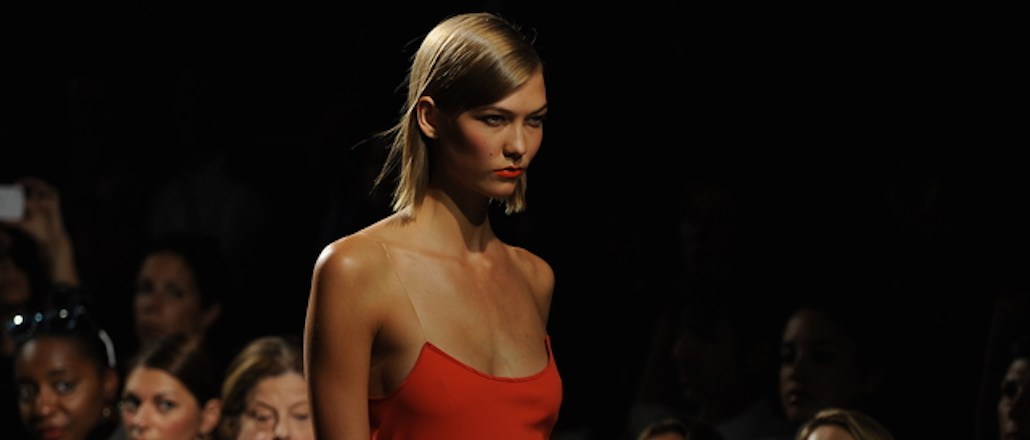Save 50% on a 3-month Digiday+ membership. Ends Dec 12.

The diffusion brand, as it has existed for the past few decades, feels ancient in the modern fashion industry.
In fashion, the term “diffusion brand” means a secondary line by a well-known designer. (Think Marc by Marc Jacobs, CK by Calvin Klein.) They are intended to reach a younger, aspirational demographic with lower price points and edgier items — all while generating extra revenue.
Diffusion brands had their heyday in the 1990s and early 2000s, but since then, the industry has changed. Today’s consumers are shopping and researching across brick-and-mortar, online and mobile channels, and legacy fashion houses have been slow to realign their resources accordingly.
“Omnichannel is taking up a lot of focus for these brands that aren’t digitally native, and that’s a lot of time, energy and organizational change,” said Ruth Bernstein, founder of creative agency Yard. “With diffusion lines, you’re splitting your attention to two different brands that have two different voices. Then you must maintain both conversations across channels. It’s hard.”
A quick look at some of the designers that have discontinued their diffusion brands demonstrates that the model has lost its luster. Marc by Marc Jacobs was absorbed back into the main Marc Jacobs line in 2015. D&G by Dolce & Gabbana dissipated in 2011. Prada’s Miu Miu was repositioned into a sister brand. DKNY is still hanging on, but things aren’t looking good: Namesake Donna Karan recently stepped down as the brand’s creative director, and Aliza Licht, the brand’s popular social media persona @DKNYPRGirl, has departed.

It’s not just that retailers are facing a sink-or-swim situation among new channels. New trends like fast fashion (H&M, Zara) and affordable luxury (Tory Burch, Michael Kors) have eaten up diffusion brands’ stake in the market.
“In the 1990s, diffusion brands had much less competition than they do today,” said Rony Zeidan, founder of branding agency Ro New York, who also serves as a contributor at the publication Luxury Society. “There’s no sexiness or luxuriousness around them anymore; the market is too diversified, and shoppers have too many options.”
Legacy luxury brands have begun warming up to e-commerce — Burberry stands out as a luxe-to-online success story — but overall progress is slow moving.
Design houses like Chanel, Fred Segal and Tom Ford announced only this year that they would begin selling online. Others, like Céline, haven’t budged, still selling product strictly in stores. According to fashion-business analysis firm Fashionbi, online sales currently account for 5 percent of the luxury goods industry. This is behind that of the overall global industry, where online sales are projected to account for 6.7 percent of all retail this year.
“When you’ve got physical retail and e-commerce, all the pieces must work together,” said Bernstein. “If a secondary diffusion line doesn’t make sense, it starts to fall apart.”
The Internet has driven that point. Now, fashion shows are streamed runway-side on Periscope, emerging indie brands like Revolve can blast into the mainstream retail industry, and the designers themselves, like Michael Kors and Marc Jacobs, can share behind-the-scenes peeks into collections (and their personal lives) on Snapchat and Instagram. The Web has shed a clearer light on the fashion industry, previously nontransparent to outsiders, and as a result, the previous unattainability of high-end designers is lessened, along with the need for a diffusion brand.
GOT MILK! Thank you @bigandmilky A photo posted by Marc Jacobs (@themarcjacobs) on
“The visibility of fashion and runway shows online has changed fashion in a way we haven’t seen before,” said Zeidan. “Everyone is seeing runway shows online six months before the product is in-store, and the aspect of being in touch with the fashion world online has subconsciously caused a rift between what consumers want and what they’re offered.”
Enter brands like Asos, Zara and H&M that create runway imitations for a fraction of the cost, and quickly. H&M has also been home to quick-to-sell-out collections in collaboration with designers like Alexander Wang. In comparison, the diffusion brand is slow to react to trends that its own head designer is creating.
“E-commerce has sped up the fashion industry,” said Ashley Painstil, editorial director at FashInvest, a business platform and research firm for growing fashion, retail and consumer companies. “From production to reaching the audience, one streamlined approach from the brand is important. Not to mention brand identity is important, and diffusions were watering those down.”
DKNY, for its part, has made a smart move in its bid for survival: In Donna Karan’s wake, Dao-Yi Chow and Maxwell Osborne were brought in as the new creative directors. Previously, the pair created trendy, millennial-favorite label Public School — the exact type of brand that’s threatening diffusion brands’ relevance.
“Diffusion lines were a good idea for their time,” said Paintsil. “But social media and e-commerce took over millennial shopping habits. A luxury brand has to recruit talent that knows those habits to keep it alive online.”
Image of the DKNY Spring 2014 show via Fashionstock.com/Shutterstock
More in Marketing

Pitch deck: How Amazon is recasting Twitch as a core part of its CTV pitch
Amazon is positioning Twitch as a defining asset in its CTV ambitions.

Netflix transforms former mall department stores into experiential venues
The location in Dallas opens this week, and one at the King of Prussia mall near Philadelphia opened last month.

Future of Marketing Briefing: AI has created a new talent paradox in programmatic agencies
The job isn’t execution anymore. AI handles that. The job is judgement.





